For those of us homebound during the Covid-19 outbreak, what’s the best way to avoid cabin fever and bleak news saturation?
A few good ones I’ve heard or experienced have been: catching up on a good TV show like Westworld, finally getting around to using an exercise machine, cooking healthy meals at home, playing board games with co-residents, chatting with friends and family on Zoom, and writing (or attempting to write) the Great American Novel.
And there’s always telling a good story. One of the best work experiences I’ve had in recent years has been asking stakeholders in advanced, clean transportation how they got here in the first place. How did they get so passionate about the subject matter?
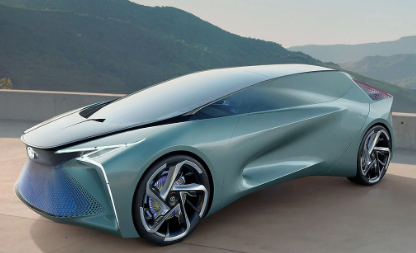 That might have happened during a video interview for Automotive Digest; or a phone interview for an article; or during a luncheon at ACT Expo; or by exchanging emails after connecting on LinkedIn; or watching them give a presentation on the vehicle, fuel, or technology they’ve been championing for years; or talking with them during monthly calls of Green Auto Market’s editorial advisory board.
That might have happened during a video interview for Automotive Digest; or a phone interview for an article; or during a luncheon at ACT Expo; or by exchanging emails after connecting on LinkedIn; or watching them give a presentation on the vehicle, fuel, or technology they’ve been championing for years; or talking with them during monthly calls of Green Auto Market’s editorial advisory board.
I’ve had a few more good questions to ask them, or that I got asked. These might include:
- What do you really think it will take for clean vehicles to reach 10 percent (or 25 percent, 50 percent, etc.) of US new vehicle sales?
- What are the most compelling points to make about switching over from gasoline and diesel to electric vehicles; or hybrids; or hydrogen; or natural gas; or propane autogas; or biogas; or renewable fuel?
- What comes first — the chicken or the egg? The vehicle or the charging/fueling infrastructure? Or, are they equally important?
- How did you pick this field of endeavor over something more established and safe?
Readers of Green Auto Market have told me quite a few fascinating stories. Their passion for the subject matter and staying informed might have started years ago when they took over fleet acquisitions for a city directed to reduce greenhouse gas emissions; or they’ve been obsessed with electric vehicles ever since they made their first do-it-yourself low speed, short range EV from a kit — and years later bought a Nissan Leaf, Chevy Volt, or Tesla Model S; or they’ve worked for a government agency promoting adoption of alternative fuel vehicles; or they’ve worked in one or more startups breaking into the world of EVs and charging; or for a major automaker setting up a division in EVs, autonomous vehicles, or mobility services; or they just love to read and talk about the latest in cars, fuels, and vehicle tech.
For those of you interested in sharing your stories about getting hooked on clean transportation — and about what you’d like to see happen in the near future — in Green Auto Market, please email at jlesage378@gmail.com. It would be best to include your name and affiliation (employer, organization, area of interest, etc.); or you can remain confidential about your name and affiliation, if need be.
Speaking of which, here’s my story………
I started following the subject matter in the 1990s while serving as an editor at Automotive Fleet. I spent time talking to fleet managers who were testing out vehicle conversions to natural gas and propane autogas; they started receiving funding grants from Air Quality Management Districts in California (and other agencies around the country) to convert vehicles over to compressed natural gas fueling systems and to have a fueling dispenser placed at their base location.
During that time, I might also have been interviewing someone involved in testing out other alternative fuels such as ethanol and methanol. Support for methanol didn’t last very long after engine corrosion became a major concern. I’d also heard about limited test projects being done — electric vehicles (one of them later becoming General Motors’ EV1), a self-driving truck by the military, and hydrogen fuel cell vehicles that picked up more support from automakers and government agencies by the early 2000s.
For the most part, interest in clean transportation faded away by the second half of the 1990s. Cheap gasoline and diesel prices; attractive fleet incentives for full-size cars, trucks, and vans; and domestic manufacturer truck and van models that could be customized and equipped for utility fleets, construction, and maintenance operations, took away much of the interest in alternative fuel vehicles by the late 1990s.
The turning point for me was in 2007. As I’ve shared with some of you, on Aug. 12 of that year, I was struck with encephalitis — an inflammation of the brain caused by a previous infection activated again. That one had been herpes simplex that started when I was a child with chicken pox. It was reactivated in 2007 primarily by stress; though it was largely unknown at the time, and it wasn’t diagnosed correctly at first. On that day, my heart stopped twice and I had to be revived — or I wouldn’t have lived through it.
I was hospitalized for about two months, with the encephalitis swell blocking my memory (front, left cortex of the brain) for most of that time period. I wasn’t able to return to my office for work until after the first of the year. During that time after getting out of the hospital and staying home, I found myself going on the internet to research and read about subject matter I’d been digging into earlier — such as while attending the Alternative Fuels & Vehicles Conference in Anaheim earlier that year. Topics that grabbed my interest included concern over global warming; cleantech startups being a hot commodity, with capital available for EV startups and solar and wind power companies; and reading about corporate sustainability policies.
My interest transitioned over to fascination during 2008 — from the gasoline and diesel price spike and volatility, and doing features for LCT Magazine on chauffeured transportation fleets starting to try out alternative fuels. During that year, I profiled the Econation startup company— which was bringing in Priuses, hybrid SUVs, and CNG-powered Lincoln Town Cars to its fleet for corporate trips in Los Angeles.
I was blessed with support for my interest and fascination in these cars, fuels, and technologies while working with Automotive Digest and its team (led by Publisher Chuck Parker). Green Automotive Digest started up in 2010, which gave me an excellent channel for meeting and interviewing several stakeholders in the field.
During all of this time period, I became most fascinated with two key themes — clean transportation offering pragmatic solutions; and the absolute necessity of transportation in our economy and lifestyles. I would end up talking about, and writing about, these topics quite a few times — at least as a backstory to a news item or feature I was digging into.
Here’s a question for you to consider. What if you could help clean the air, reduce greenhouse gas emissions, create jobs, and support technology innovation? Would you consider that intelligent, practical, and inspiring? That’s been a key piece of the formula when a new vehicle technology is introduced to the public. A piece of the press release might state something like: “This fuel will reduce carbon emissions by 1.2 million tons this year compared to diesel fuel.”
As for the role of transportation in our cultural and economic development, I think it’s been as important as power, communications, lighting, medical care, and distributing water. The essential value and role that ground transportation has played in human history for 200 years started with rail, and later with internal combustion engines and crank-up starters, the first electric vehicles, and bringing steam-engines over from trains to cars. With it came the eventual domination of petroleum and serious threats to air quality and sustainability of the world we live in.
I have to admit that I do love fast cars that can guzzle a lot of gasoline — with the 1968 Pontiac GTO being my favorite. That wasn’t the second car in the legendary car chase scene in the 1968 movie Bullitt — that was another of my favorites, the Dodge Charger, taking on the classic Ford Mustang. I believe we have the right to own and retain these cars, but they’re certainly not practical for daily commuting.
I would gladly ride to work in a shared, automated, electric SUV or bus. Why stay stuck in traffic, resenting other drivers and feeling bored and restless when you could be chatting with ridemates, playing a video game, watching something really good on a screen, reading your favorite humor columnist, texting comments to friends and family, and more?
I have appreciated researching and writing about the subject matter for previously mentioned publications. I’ve also appreciated my freelance writing with Autoblog Green, Hybridcars.com, and Oilprice.com. I had some good years conducting market intelligence studies on car rental, business travel, and travel management for Abrams Travel Data Services. I’ve also valued participating in speaker panels at AltCar Expo. I do look forward to what’s next, and expect that Covid-19 will be overcome and we’ll get back the business of green cars, fuels, and technologies.
And in other news:
White House finalizes clean car rules: Last week, the Trump administration announced its rollback of Obama-era fuel-economy regulations from 2012, which aimed to require automakers to up the average fuel economy in their fleets to 54.5 mpg within the next few years. The administration finalized the second part of the rollback, which is formally known as the Safer Affordable Fuel-Efficient (SAFE) Vehicles rule. The second part of the SAFE rule would require automakers to increase the fuel economy of passenger cars by 1.5 percent each year. That’s far less stringent than the standards set by the Obama administration, which mandated a 5 percent annual increase in fuel economy. But it’s less dramatic than the Trump administration’s original plan, which was to freeze the standards at 2020 levels through model year 2026. Court challenges are expected to be filed once again. President Trump posted tweets similar to comments he’d made last year: ”My proposal to the politically correct Automobile Companies would lower the average price of a car to consumers by more than $3500, while at the same time making the cars substantially safer,” he tweeted. “Engines would run smoother. Positive impact on the environment! Foolish executives!”
Automakers close plants, making ventilators: Here’s a list of US auto factory shutdowns and scheduled dates of reopening in 14 states across the US. Several of the plants will be opening up again this month, between April 13 to 20. Ford and General Motors announced in late March that they’ll be building thousands of ventilators to fight Covid-19. These are taking place in plants that had been shut down from car production. Tesla is showing a new video posted on the company’s YouTube channel, where its engineers show off two versions of a ventilator, a prototype model with its components laid out across a desk, as well as a packaged model that shows how it might look when used by a hospital. CEO Elon Musk made a commitment to build the ventilators last month after New York City Mayor Bill de Blasio asked for the company’s help.
BYD wants to improve EV battery safety: BYD last week unveiled its Blade Battery, designed to resolve concerns about battery safety in electric vehicles. At an online launch event, Wang Chuanfu, BYD’s chairman and president, said that the Blade Battery reflects BYD’s determination to resolve issues in battery safety while also redefining safety standards for the entire industry. The Blade Battery has been developed by BYD over the past several years. Due to its optimized battery pack structure, the space utilization of the battery pack is increased by over 50 percent compared to conventional lithium iron phosphate block batteries. While undergoing nail penetration tests, the Blade Battery emitted neither smoke nor fire after being penetrated, and its surface temperature only reached 30 C (86 F) to 60 C (140 F). It would be far less susceptible to catching fire – even when they are severely damaged — than other batteries on the market.
China extending EV sales incentives: China agreed to extend tax breaks and subsidies on electric-vehicle purchases for two years to provide relief for the struggling industry in the wake of the coronavirus pandemic. The government will keep waiving the 10 percent sales tax on EVs, a benefit that began in 2014 and was due to expire at the end of this year, through 2022, according to a media report. The state council overseeing the program also agreed to prolong subsidies for EV purchases for two years. The sales tax waiver and subsidies apply to battery electric, plug-in hybrid, and hydrogen fuel cell vehicles.
Emissions drop during pandemic: The coronavirus pandemic is offering one advantage: shutting down industrial activity and temporarily slashing air pollution levels around the world, satellite imagery from the European Space Agency shows according to Wired. Readings from ESA’s Sentinel-5P satellite show that over the past six weeks, levels of nitrogen dioxide (NO2) over cities and industrial clusters in Asia and Europe were markedly lower than in the same period last year. Nitrogen dioxide produced from car engines, power plants, and other industrial processes, is thought to exacerbate respiratory illnesses such as asthma.
(Editor’s Note: Look for the April issue of Wired to read a special section on climate change, entitled, “We Have One Earth — And The Technology To Save It. Go!”)
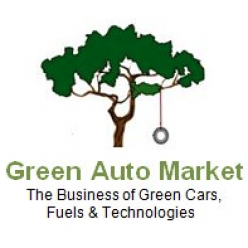



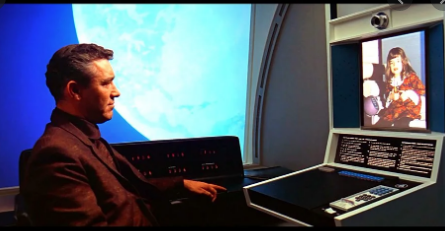 couple of years ago, and thought, wow that will be wonderful when we someday can do something like that with such a crystal clear image and strong, consistent transmission. We could use Skype or FaceTime then, but there were a lot of glitches and inconsistencies.
couple of years ago, and thought, wow that will be wonderful when we someday can do something like that with such a crystal clear image and strong, consistent transmission. We could use Skype or FaceTime then, but there were a lot of glitches and inconsistencies. the unforeseen future. It will take quite a while until the public can rest assured that healthcare professionals can stop the spread and bring a cure — or at least arrest worsening of symptoms — for those infected with the contagious respiratory disease. It’s been causing panic among those crowding supermarkets to purchase bottled water, toilet paper, sanitary wipes, and in the past few days, nutritional basics such as canned soup, pasta, and bread. Governments around the world are placing severe restrictions on travel and public gatherings in attempts to quell panic and spreading of the infection and disease.
the unforeseen future. It will take quite a while until the public can rest assured that healthcare professionals can stop the spread and bring a cure — or at least arrest worsening of symptoms — for those infected with the contagious respiratory disease. It’s been causing panic among those crowding supermarkets to purchase bottled water, toilet paper, sanitary wipes, and in the past few days, nutritional basics such as canned soup, pasta, and bread. Governments around the world are placing severe restrictions on travel and public gatherings in attempts to quell panic and spreading of the infection and disease. rides provided by Uber, Lyft, Via, Curb, and other firms, are usually taking away even more low fuel consumption and displacing mobility such as public transportation, biking, or walking. UCS recommends that these companies take efforts to electrify their fleets and increase their pooled rides. “For ride-hailing to contribute to better climate and congestion outcomes, trips must be pooled and electric, displace single-occupancy car trips more often, and encourage low-emissions modes such as mass transit, biking, and walking,” the report says.
rides provided by Uber, Lyft, Via, Curb, and other firms, are usually taking away even more low fuel consumption and displacing mobility such as public transportation, biking, or walking. UCS recommends that these companies take efforts to electrify their fleets and increase their pooled rides. “For ride-hailing to contribute to better climate and congestion outcomes, trips must be pooled and electric, displace single-occupancy car trips more often, and encourage low-emissions modes such as mass transit, biking, and walking,” the report says.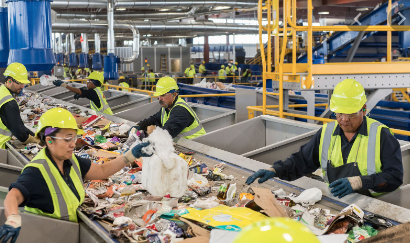 thinner containers, and more paint cans. Some of the paint cans were still partially filled, and most were empty. Either way was fine to drop off, I was told the day before when I called the EDCO Disposal center in Signal Hill, Calif., for more information.
thinner containers, and more paint cans. Some of the paint cans were still partially filled, and most were empty. Either way was fine to drop off, I was told the day before when I called the EDCO Disposal center in Signal Hill, Calif., for more information.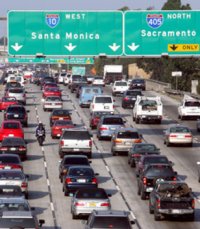 DC, New York City, and Boston. For now, we’re looking for alternative routes and better times to drive somewhere (such as leaving extremely early for an important appointment). New vehicle sales are expected to continue to increase in the developed (and developing) world over the next decade, and these vehicles are made to last longer than in the past — perhaps 12 to 15 years before being taken off roads. Another trend having an impact will be young people moving to cities around the world, and needing some form of transportation. Uber rides, and competitors in mobility, will be part of it; along with personal and fleet vehicles, and commercial trucks and buses. Another key indicator of urban growth: trillions of dollars are being secured to fund development of sporting and entertainment centers; university R&D zones; office buildings; residential properties for both young urban dwellers and senior living communities; and new and revitalized retail shopping districts. This means more and more commercial vehicles will be showing up in metro areas along with more passenger vehicles for personal mobility.
DC, New York City, and Boston. For now, we’re looking for alternative routes and better times to drive somewhere (such as leaving extremely early for an important appointment). New vehicle sales are expected to continue to increase in the developed (and developing) world over the next decade, and these vehicles are made to last longer than in the past — perhaps 12 to 15 years before being taken off roads. Another trend having an impact will be young people moving to cities around the world, and needing some form of transportation. Uber rides, and competitors in mobility, will be part of it; along with personal and fleet vehicles, and commercial trucks and buses. Another key indicator of urban growth: trillions of dollars are being secured to fund development of sporting and entertainment centers; university R&D zones; office buildings; residential properties for both young urban dwellers and senior living communities; and new and revitalized retail shopping districts. This means more and more commercial vehicles will be showing up in metro areas along with more passenger vehicles for personal mobility.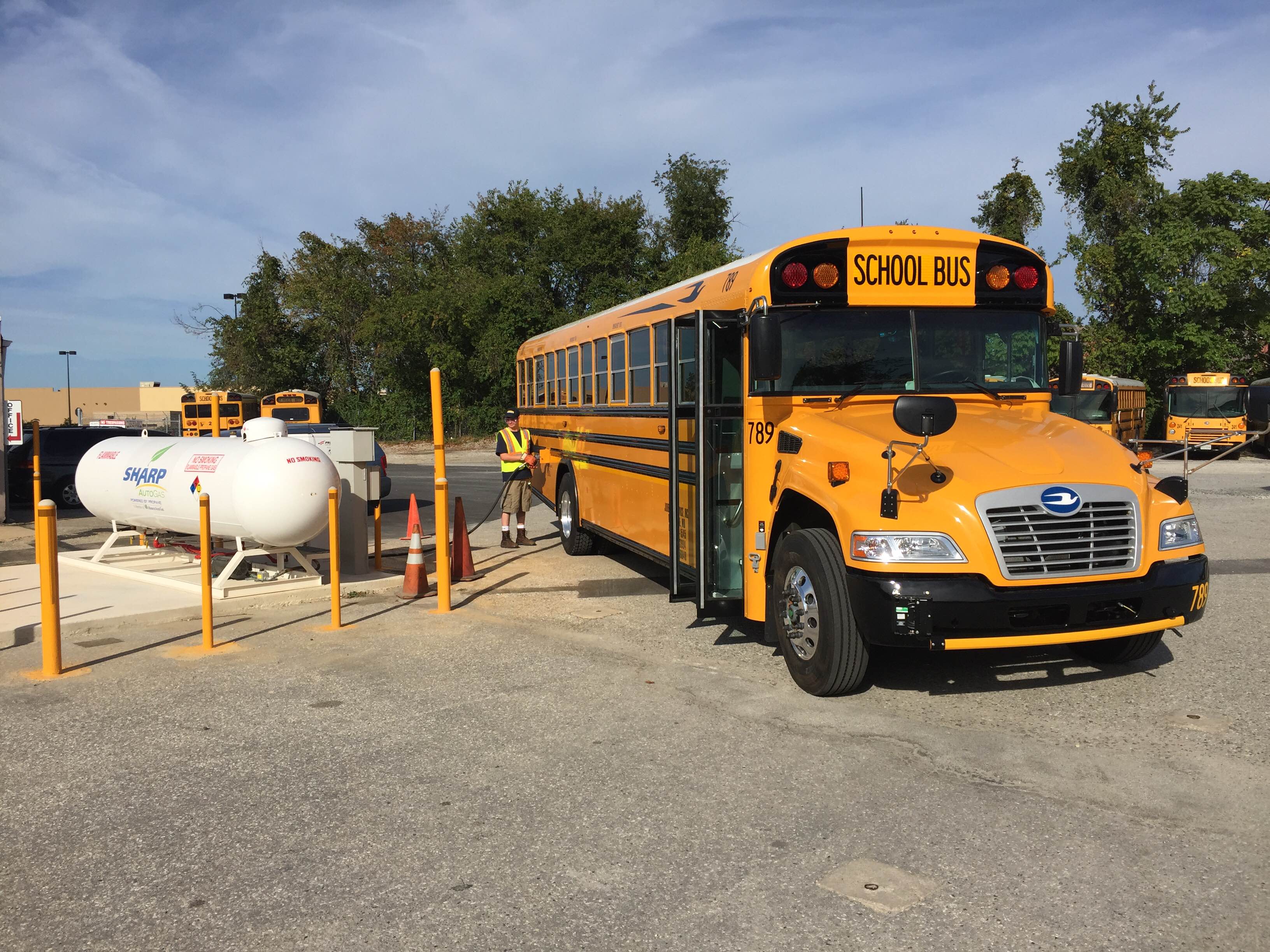 replace older, dirtier diesel school buses with modern counterparts, as Green Auto Market’s Feb. 3
replace older, dirtier diesel school buses with modern counterparts, as Green Auto Market’s Feb. 3 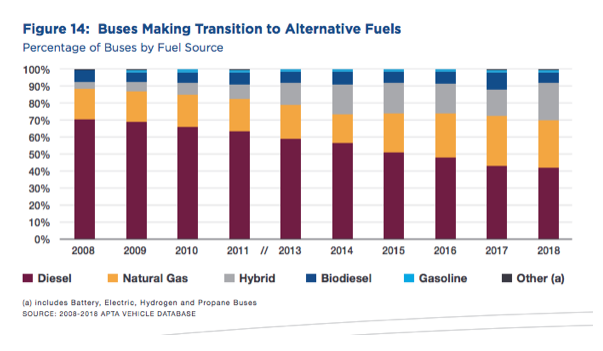
 Francisco launched the Cruise Origin,
Francisco launched the Cruise Origin, 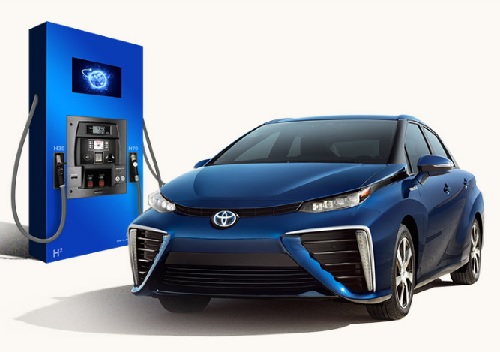 Co., that concludes there are now three core market drivers: a steep drop in production costs, higher load utilization cutting distribution and refueling costs, and additional cost drops from scaling up of end-use equipment manufacturing. The study looked at 25,000 data points gathered and analyzed from 30 global companies with cost reductions expected across several different hydrogen applications. These sectors include long-distance and heavy-duty transportation, industrial heating, heavy industry feedstock, and others, which make up about 15 percent of global energy consumption. Of course, much support is needed and Hydrogen Council is championing effective government policies to be adopted in key geographies, along with investment support of around $70 billion in the lead up to 2030 in order to scale up and produce for a much more cost-competitive fuel. “The Hydrogen Council believes that the report’s findings will not only increase public awareness about the potential of hydrogen to power everyday lives, but also debunk the myth that a hydrogen economy is unattainable due to cost,” said Euisun Chung, executive vice chairman of Hyundai Motor Group and co-chair of the Hydrogen Council. “If we are to reach our global climate goals by mid-century and reap the benefits of hydrogen, now is the time to act.”
Co., that concludes there are now three core market drivers: a steep drop in production costs, higher load utilization cutting distribution and refueling costs, and additional cost drops from scaling up of end-use equipment manufacturing. The study looked at 25,000 data points gathered and analyzed from 30 global companies with cost reductions expected across several different hydrogen applications. These sectors include long-distance and heavy-duty transportation, industrial heating, heavy industry feedstock, and others, which make up about 15 percent of global energy consumption. Of course, much support is needed and Hydrogen Council is championing effective government policies to be adopted in key geographies, along with investment support of around $70 billion in the lead up to 2030 in order to scale up and produce for a much more cost-competitive fuel. “The Hydrogen Council believes that the report’s findings will not only increase public awareness about the potential of hydrogen to power everyday lives, but also debunk the myth that a hydrogen economy is unattainable due to cost,” said Euisun Chung, executive vice chairman of Hyundai Motor Group and co-chair of the Hydrogen Council. “If we are to reach our global climate goals by mid-century and reap the benefits of hydrogen, now is the time to act.”